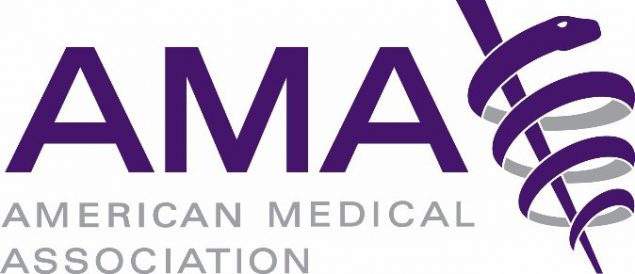Protocols
Find standardized, evidence-based protocols for use in your practice. When embedded in electronic health records, treatment protocols can serve as clinical decision support at the point of care so no opportunities are missed to achieve control.
Cholesterol Management Protocols
High low-density lipoprotein (LDL) cholesterol is a major risk factor for heart attack, stroke, and atherosclerotic cardiovascular disease (ASCVD). The use of evidence-based protocols is one strategy to manage and lower cholesterol levels among patients with established ASCVD and patients at risk for heart attack, stroke, or ASCVD.
Create Your Own Protocol
In 2018, the American College of Cardiology (ACC) and the American Heart Association (AHA) released new clinical guidelines on the treatment of blood cholesterol to reduce ASCVD risk in adults. You can create your own cholesterol management protocol using the flow diagram from the guidelines. Or you can adapt one of the featured evidence-based protocols below.
The guidelines from the ACC and AHA recommend statin use among four major patient management groups:
- Individuals with clinical ASCVD
- Individuals with primary elevations of LDL-C ≥190 mg/dL
- Individuals aged 40 to 75 who have diabetes with LDL-C of 70 to 189 mg/dL and without clinical ASCVD
- Individuals without clinical ASCVD or diabetes with LDL-C of 70 to 189 mg/dL and estimated 10-year ASCVD risk ≥7.5%
Companion Provider Tool
The ASCVD Risk Estimator calculates the estimated 10-year and lifetime ASCVD risk among patients without ASCVD. By entering basic demographic characteristics and medical information, you can use the calculator to determine your patient’s estimated risk for ASCVD. The ASCVD risk estimates can also be used to facilitate a discussion between you and your patients about how to reduce risk for ASCVD.
The AHRQ Clinical Decision Support library provides artifacts that support cholesterol management including ASCVD risk assessment and statin use.
Featured Evidence-Based Protocols*

The Kaiser Permanente ASCVD Primary Prevention Guideline provides an overview of statin therapy and dosing recommendations for primary prevention of ASCVD.
Download the protocol [PDF – 204 KB]
The Kaiser Permanente ASCVD Secondary Prevention Guideline provides recommended statin dosing for secondary prevention of ASCVD.
Tobacco Cessation Protocols
No level of smoking or tobacco use is safe. Tobacco addiction is a chronic condition, often requiring multiple quit attempts for a tobacco user to become tobacco free. There are effective, evidence-based, brief clinical interventions available to help patients who smoke. Tobacco cessation protocols can be integrated into the tobacco use identification and intervention clinical workflow.
Create Your Own Protocol
Create your own tobacco cessation protocol using our template and implementation guidance document, which includes insights from stakeholders in the tobacco cessation community.
Featured Evidence-Based Protocols*

This three-part treatment guidance includes two easy-to-use charts and a table detailing VHA medication options. Part 1 provides guidance on “The 5 A’s” (ask, advise, assess, assist, arrange) used to address tobacco use among current and former smokers. Part 2 provides a flowchart to assist providers in selecting VHA first-line therapies and what to do for those patients who relapse. Part 3 consists of a detailed table describing VHA smoking cessation medication regimens, including pros/cons, limitations, and dosing recommendations.
Tools and Resources
- American Academy of Family Physicians: Treating Tobacco Dependence Practice Manual [PDF – 968 KB]
This practice manual provides solutions and suggestions for implementing a systems-change approach for evidence-based tobacco cessation treatment. - CDC Office on Smoking and Health: Tips From Former Smokers® Campaign
This campaign provides resources for health care providers to get their patients to quit smoking. - National Cancer Institute: Smokefree.gov
The information and professional assistance available on this website can help to support your patients’ immediate and long-term needs as they become, and remain, nonsmokers. Smokefree.gov allows patients to choose the help that best fits their needs. - University of California, San Francisco: Rx for Change—Clinician-Assisted Tobacco Cessation
This comprehensive, turn-key, tobacco cessation training program equips health professional students and licensed clinicians with state-of-the-art knowledge and skills for assisting patients with quitting. - University of Wisconsin Center for Tobacco Research and Intervention: Videos for Health Care Providers
This resource includes videos about tobacco dependence treatment for health care providers.
Learn More
- An Algorithm for Tailoring Pharmacotherapy for Smoking Cessation: Results from a Delphi Panel of International Experts
Tobacco Control, February 2009 - An Updated Algorithm for Choosing Among Smoking Cessation Treatments
Journal of Substance Abuse Treatment, August 2013
Hypertension Treatment Protocols
Use standardized treatment protocols to improve blood pressure control by clarifying titration intervals revealing new treatment options and expanding the types of staff that can assist in timely follow-up with patients.
Create Your Own Protocol
Create your own hypertension treatment protocol using our template, guidance document, interactive guide, and insights and examples from established stakeholders in the heart disease and stroke prevention and treatment community. Recognizing that significant clinical uptake of guidelines occurs over time, some of the tools and resources provided on this website may reflect elements of prior algorithms, which can be adapted to meet the guidelines supported by specific health care settings.
Featured Evidence-Based Protocols*

The American Medical Association (AMA) protocol focuses on hypertension medication treatment for adults without congestive heart failure, coronary artery disease, pregnancy, or stage 3 chronic kidney disease. It is intended to meet the needs of a wide range of patients and be cost-effective to deliver the best results based on the evidence.
Protocol:
- Use of a single pill combination medication, preferably a dihydropyridine calcium channel blockers plus angiotensin-converting enzyme inhibitor or angiotensin receptor blocker as first-line therapy for those not already on antihypertensive medication
- Suggested time intervals and use of self-measured BP (if available) for BP reassessment:
- Suggestions for medication intensification if BP not at goal
- Suggestions for single-pill combination use
Supplemental Guidance:
- Provides estimated cost of 30-day supply for patients
- Provides guidance on dosing intensification

The Kaiser Permanente protocol was developed for use by integrated health care delivery systems that care for adults.
Protocol
- Use of thiazide diuretic/ACE inhibitor combinations as first-line therapy; when feasible, single pill combination tablets are preferred
- Guidelines for women of child-bearing potential
- Recommended drugs and dosages
- Documentation of the number needed to treat to prevent one additional negative health outcome
Supplemental Guidance
- Systems-based approach that establishes a comprehensive hypertension control program with these elements:
- Treatment protocol elements listed previously
- Team-based care
- Convenient blood pressure checks
- Population registry
- Quality performance goals
- Quality performance tracking metrics
- Self-monitoring blood pressure

The VA/DoD protocol focuses on the critical decision points in the management of hypertension in primary care.
Protocol
- Use of thiazide diuretics as first-line therapy
- Recommendations for prehypertension and treatment by stage of hypertension
- Target goals vary depending on patient’s co-morbidities (e.g., diabetes, chronic kidney disease)
- The evidence base for each step
- Recommended lab tests
Supplemental Guidance
- Recommendations for specific segments of patient populations
- Impact of lifestyle therapies on blood pressure in hypertensive adults
- Causes of inadequate response to therapy
- Strategies to improve patient adherence
Learn More
- Estimated Hypertension Prevalence, Treatment, and Control Among U.S. Adults
- Protocol-Based Treatment of Hypertension: A Critical Step on the Pathway to Progress
JAMA, January 2014 - Better Blood Pressure Control: A National Priority
(Interview with CDC Director Tom Frieden)
Medscape, November 2013
*About Featured Protocols
The featured protocols are examples of a wide variety of available evidence-based protocols that practices and health care systems may consider for adoption and use. Linking to non-federal sites does not constitute an endorsement by the Department of Health and Human Services, the Centers for Disease Control and Prevention, or any of their employees of the sponsors or the information or products presented on the sites. Links to non-federal sites containing protocols serve only as a source of guidance. Health care professionals should always consider the individual clinical circumstances of each person. Links to the protocols are not intended to be a substitute for professional medical advice; individuals should seek advice from their health care professionals.
